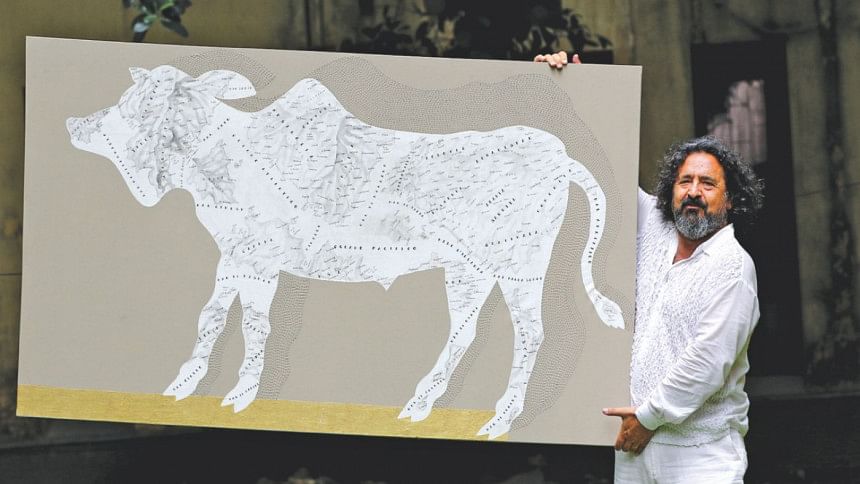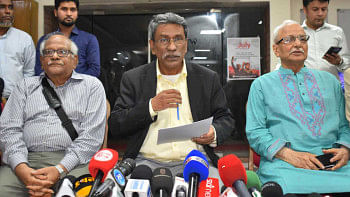SOUL TO SOUL

You will never find on the shelves of any travel agency, maps used by Nicola Strippoli Tarshito for his travels. That's because they are customized “soulmaps”, whilst in a 'conventional' geographical map the country of departure and that of destination are located thousands and thousands of miles apart, in these they miraculously appear to be bordering one another! This eccentric traveller apparently needs neither ship nor plane to reach the Indian subcontinent; it is enough for him to cross the Alps and find himself in India or Bangladesh. Is this just a whimsical act of an artist? Not at all! It's a pure act of love: an act of love for the planet and the varied humanity that lives on it done by a new type of warrior – the love warrior - who roams the lands of this world not to plunder, but to humbly offer to the people the works of his imagination and artistry and joyfully re-invent, together with them, his own and their traditions.
Both this creatively redefined geography and the spinning process set in motion by the journey that dries up the sea of preconceptions about the other that we have, being immersed in our own culture, brings us closer to the ideal of “One Earth One Humanity” that sometimes stops being a mere chimera and comes true. Tarshito's own life choices, as well as the creative encounters with artists and artisans his work is so much indebted to, tell us about how, in what context, and in how much time this miracle could have happened and may still happen for him. As a young man, Tarshito didn't fall into the trap of that overused and misleading metaphor of rooting and uprooting linked to the vision of man as a tree. As Plutarch rightly put it, a man is not “a plant made to stand still with its roots fixed to the ground where she was born”. Tarshito felt that even Florence, where he majored in architecture, was too a small world for him to live in and that a trip to the East could open new horizons for him to explore. And in the Indian ashram where he landed, he realized that the external journey - moving from one physical location to another – could easily turn into an interior journey in which one learns something about himself that he did not know before. The two would then grow into a true pilgrimage, a journey into the sacred though different stages of purification.
Though thirsty for inner knowledge – as the Sanskrit name the guru Shree Rajneesh gave to him clearly suggests – Tarshito didn't opt for leading an ascetic life forever, since travel and cultural interaction were favourite dimensions of his own life. By journeying through the traditions and rituals of worlds that are so different from his own, Tarshito enriched his own vision of life. He saw for himself that the knowledge of others and of the cosmic unity that reveals itself in every contact with the other helps him to discover and value the universal within himself. After all, Tarshito did nothing but follow, like everyone else, the process of ethical criticism, inherent in Northrop Frye's trans-valuation, a concept TzvetanTodorov skillfully summarised as “looking back on oneself with a glance informed by contact with others” in his book “The Morals of History”.
In fact, this exhibition is - as recalled by the artist himself - a “hymn to the discovery of the other”. And here the “others” are the embroiderer Totini Saha from Jessore and her colleagues, the artisans of Kumudini Handicraft and those who, like Prodip and Mithun Pal, work on bronze and brass in the Banik family foundry in Dhamrai. With the formers Tarshito celebrates the traditional Bengali embroidery Nakshi Kantha (very fitting, by the way, the comparison with the Italian tradition of Bobbin Lace, Merletto al Tombolo, an embroidery technique represented in the exhibition by three works made in Corato, the artist's hometown, in collaboration with the artisan Angela Gallo). To the latter he entrusts the construction of six bronzes, six small boats that summarises in their very structure – the vase or tree-shaped prows - and load - sacred animals and warriors of love - favorite subjects of his artistic production. A production he always loves to achieve together with other people and sign therefore with the formula "Tarshito with ...”.What can truly lead to the full discovery of the other is a soul to soul's dialogue; hence the well-chosen exhibition's title. Tarshito seems to invite us to give up Facebook's virtual dialogue and join the real dialogue: the deep, creative dialogue that he himself, the artist/love warrior, is cheerfully engaged with his new friends, the artisans/artists of Bangladesh.
I'm so grateful to the Bangladesh National Museum for hosting with such enthusiasm an exhibition (from November 19) which can without hyperbole be described as an unprecedented contribution to the cultural exchanges between Bangladesh and Italy. It is unprecedented in the sense that it encompasses and goes beyond the two cultures at the same time, by making them expression of "One Earth One Humanity."
Heartfelt thanks, finally, to Tarshito who, addressing me as the “Ambassador of love” has unwittingly awarded me a very original title. This is indeed something that I am – immodestly - very proud of!
The writer is Ambassador of Italy to Bangladesh.

 For all latest news, follow The Daily Star's Google News channel.
For all latest news, follow The Daily Star's Google News channel. 



Comments